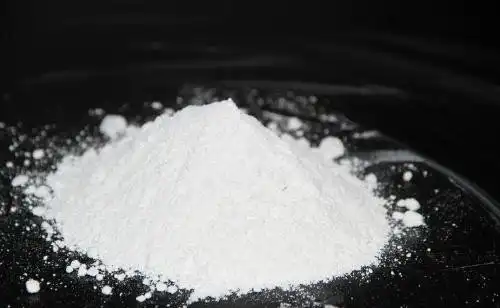Hebei Messi Biology Co., Ltd. stated that magnesium hydroxide products are divided into flame retardant grade, neutralization grade, medical grade, electronic grade, oil additive grade magnesium hydroxide, etc. in terms of application; and are divided into flake, ultrafine, whisker, nano-grade, heavy magnesium hydroxide, etc. in terms of structure. Among them, ultrafine magnesium hydroxide and magnesium hydroxide whisker have good development potential.
Flake magnesium hydroxide can be used as an additive flame retardant. The carbonization method uses magnesite or dolomite as raw materials, and the product is obtained through calcination, digestion, impurity removal, carbonization, and precipitation. Using dolomite as raw material, ammonia water as precipitant and adding surface modifier hexadecyltrimethylammonium bromide, rhombohedral flake magnesium hydroxide is obtained by hydrothermal treatment. The separation degree of magnesium and calcium in this method is high, the magnesium extraction rate is 90.02%, and the product yield is 88.21%; the precipitation method uses magnesite or dolomite as raw materials, and the product is obtained through calcination, leaching, impurity removal, and precipitation. Dolomite is used as raw material, and it is leached with hydrochloric acid and sulfuric acid successively. The product can be obtained by adding a self-made complexing precipitant and a surface modifier polyethylene glycol, with a yield of 85.20%. The acid hydrolysis method uses a variety of magnesium-containing minerals as raw materials, and obtains the product through acid hydrolysis, impurity removal and precipitation. Dolomite is used as raw material, and after hydrochloric acid acidification and impurity removal, dolomite lime milk is used as a precipitant. The product purity is 98%, among which dolomite lime milk is prepared by calcining and digesting dolomite.

Ultrafine magnesium hydroxide can be used as a flame retardant component of composite materials, and the addition of different surface modifiers can change the product particle size. Using magnesium chloride solution as raw material and ammonia water as precipitant, the product particle size is <400nm; adding a self-made surface modifier, the particle size is 150nm; using polyethylene glycol instead, the particle size is 89.5nm; using magnesium sulfate solution as raw material, adding a self-made surface modifier, the particle size is 380nm. These magnesium salt solutions can be obtained by acid leaching after acid hydrolysis or calcination of magnesium-containing minerals, and the magnesium chloride solution can be replaced by brine.
Magnesium hydroxide whiskers are short fiber functional materials, mainly added to polymer materials as flame retardants and reinforcing materials. Precipitation method, improving the precipitation process can change the aspect ratio. Using magnesium chloride solution as raw material, adding alkali and surface modifier, hydrothermally synthesize the product. Using sodium hydroxide as a precipitant, propylene glycol as a surface modifier, and microwave hydrothermal treatment, the diameter is 0.1-0.3 μm and the length is 80-110 μm; using ammonia water and sodium hydroxide as precipitants, and acrylic acid as a surface modifier, the diameter is 8-15 nm and the length is 50-150 nm; the dispersion of the product is better with medium and low concentrations of ammonia water and low concentrations of magnesium chloride solution; using basic magnesium sulfate whiskers as a precursor, sodium hydroxide as a precipitant, and potassium oleate as a surface modifier, hydrothermal treatment is performed to obtain a product with a diameter of 1-2 μm and a length of 100-200 μm; adding a surface modifier cannot reduce the particle size, but will prevent the basic magnesium sulfate whiskers from transforming into magnesium hydroxide whiskers.
